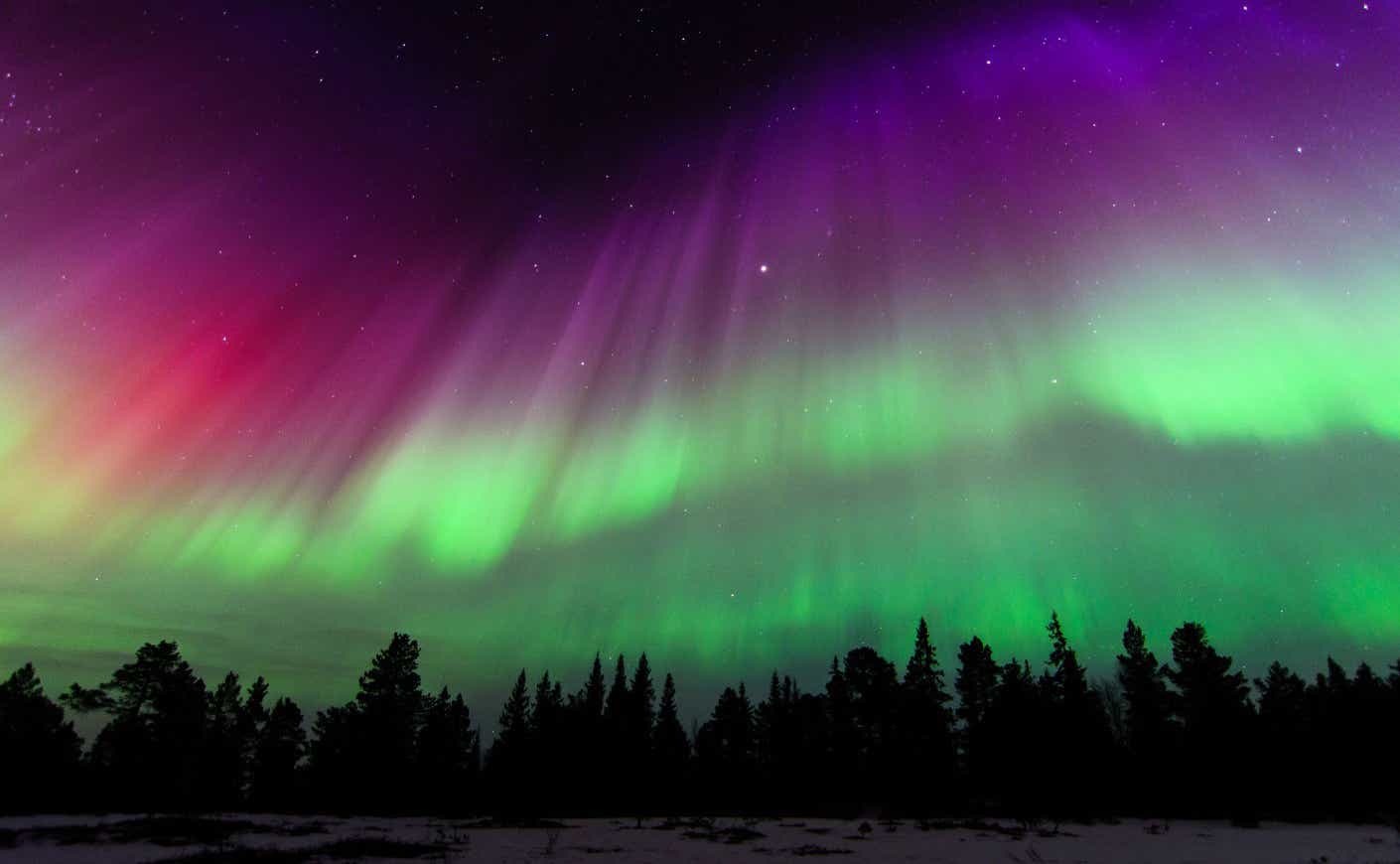When was the last time you stopped and took a look at the night sky? Well, you might want to schedule some time for stargazing this week. Americans in more than a dozen states will get the chance to see the Northern Lights starting on Wednesday.
The rare astronomical show is commonly seen in places with higher latitudes like Alaska and Scandinavia, but thanks to a strong solar storm in the atmosphere, the Northern Lights will visibly travel farther south than usual this week. Of course, this isn’t the first time something like this has happened: The upcoming storm marks the fourth one since 2019.
Wondering if you’ll be able to catch the vivid spectacle? We’ve got all the details on why they’re so special, which states will be able to see the Northern Lights this time, and the best way to view them.
What are the Northern Lights?
The Northern Lights are also known as the aurora borealis, a term first coined by Italian astronomer Galileo Galilei in 1619 after Aurora, the Roman goddess of morning.
Typically, these dancing waves of light are triggered “by collisions between electrically charged particles streaming out from the sun in the solar wind that enter Earth’s atmosphere and collide with molecules and atoms of gas, primarily oxygen, and nitrogen,” according to the University of Alaska at Fairbanks. The particles released from this phenomenon then release light, sparking a dazzling array of colors across the sky ranging from green and blue to purple and red.
While this show is typically seen at high latitudes, strong solar storms can intensify these shows, making them visible in places farther south than normal and these are typically referred to as auroras.
Which cities and states will be able to see the Northern Lights this week?
Starting Wednesday, the Northern Lights will be visible across Seattle, Des Moines, Chicago, Cleveland, and Boston. As the solar storm intensifies on Thursday, the aurora is expected to flash across other cities, including Minneapolis, Milwaukee, Indianapolis, and Annapolis, Maryland.
If you’re not seeing your city, there’s still a chance you might not have to miss out. The Geophysical Institute at the University of Alaska at Fairbanks says that the aurora borealis will also appear across parts of Vermont, Wyoming, New Hampshire, Montana, North Dakota, South Dakota, Nebraska, Michigan, New York, and Maine. Our Canadian neighbors, namely in Vancouver, will be able to catch them too.
What time will the Northern Lights be visible this week?
The best time to see the lights is within an hour or two of midnight (between 10 p.m. and 2 a.m. local time), according to the National Oceanic and Atmospheric Administration Space Weather Prediction Center (NOAA).
“These hours of active aurora expand towards evening and morning as the level of geomagnetic activity increases,” NOAA states. “There may be aurora in the evening and morning but it is usually not as active and therefore, not as visually appealing,”
If you live in an urban area, the agency also recommends getting out of the city because the lights and tall buildings could easily affect the display. “The full moon will also diminish the apparent brightness of the aurora,” it says.









